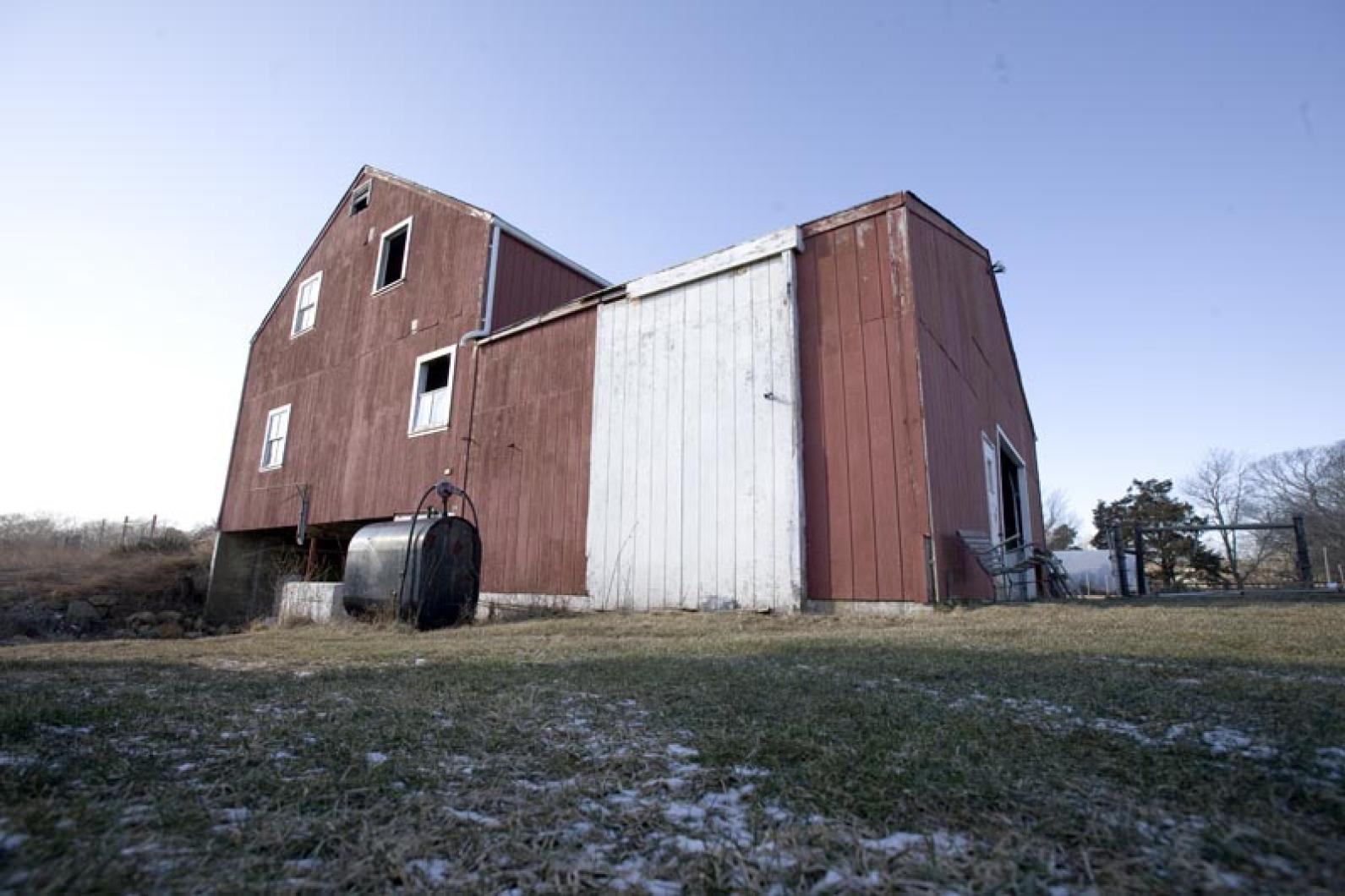From the Feb. 23, 1951 edition of the Vineyard Gazette:
The ford at North Tisbury is to be spared in the present program of highway improvement by the state Department of Public works. The landmark is one dear to the hearts of many Islanders and, together with a stretch of winding road of which it is part, it forms a strong attraction for visitors.
Just what may have been the story of the ford at the Old Mill River before the advent of the English is open to conjecture, but undoubtably the Way described as the “Common Cart Road going to Jabez Athearn’s” in the Tisbury Town Records of 1716, followed an Indian trail over which native inhabitants of Chichemmoo travelled to the Great Ponds on the south side of the Island.
Following the purchase and settlement of Takemmie in 1669, this Way through the ford was probably used from the first by owners of the home lots on the west side of the Mill Brook as handier to the then town harbor at Lambert’s Cove. Judge Samuel Sewall, who on the last of his four trips to the Vineyard in 1714 was forced to swim his horse ashore “on the West side of Onkakemy Bay,” no doubt was led by his “Pilot,” Thomas Paul, by this direct route to his host’s, James Allen, on the South Road in Chilmark.
The first mention in the Town Records of bridging the old ford is on March 16, 1935, when the voters “Chose William Andrews a Committee to examin the expediency and provable cost of errecting a Bridge acrost the Stream of the County road near the residence of Belcher Athern in said Town of Tisbury.”
On April 13, 1835, it was “voted to accept the report of the commity respecting building a bridge over the brook or stream near the House of Belcher Athearn,” and as subsequent appropriations for highway repair mention bridges, apparently the proposed bridge was built, and at the same location as the present one.

Tom E. Thatcher, who moved to West Tisbury to live last June, following his graduation from Ohio State University, Columbus, has been recalled to duty in the Navy. Mr. Thatcher enlisted in the Navy when he was 17 years old and a senior in high school. After a year of overseas duty in the Pacific area he received his honorable discharge and entered Ohio State, where he specialized in ceramics.
He visited the Island several times as a youth hosteler and liked it so well that he decided to make his home here when he finished college. Last summer he was an instructor at Mrs. Wilfrid White’s Vineyard Pottery Club, and he has since been equipping a pottery studio of his own.

Undoubtedly the nearest thing ever known in America to compare with carrying coals to Newcastle is the order filled by Bangs Market, Vineyard Haven, this week - a hundred-weight of yellow-eye beans, shipped to California by express! Which anyhow supports the contention of various Vineyarders who have served in the armed forces of the country, that the California pea-bean is an inferior legume, either raw or cooked.

Dukes County’s first woman deputy sheriff is Miss Irma Hamblen of Edgartown, an appointment made public this week by David J. McBride, high sheriff of the county. Such an appointment was considered because of the presence of women in jury panels, and Miss Hamblen because of her profession, a nurse.

People of the present day refer to “beach-coming” when they speak of gathering selected driftwood from the sands. But old-timers went woodin’, and the main difference is that in woodin’ it is a real business wherein anything that will make satisfactory fuel is gathered, regardless of size. For the real fuel hunter of the past went equipped with axe, saw, wedges and beetle, prepared to split, rive, and divide such timbers and logs as might be too weighty to handle whole.
Woodin’ was a part of Vineyard life up to fifty years or so ago. It is hardly understandable today that anyone should actually need the driftwood that lands on the shores. But neither is it easy to understand that there was a time, not so long ago, when standing trees, oaks especially, meant real wealth and that many people did not possess such wealth.
Woodin’ is not what it used to be fifty years ago. But woodin’ continues to be a fascinating pastime and a profitable one.
For old, old-timers taught us how to select driftwood. They cautioned us in the use of hard pine. They advised us to avoid the cottonwood log whenever possible. They pointed out the ends of wharf-spiles, huge chunks some times, and showed us how to split and so them.
So we went woodin’, carrying our bucksaw, axe and saw-horse, and we brought home fireplace logs which have supplied us for days and still are not exhausted. Just for fun we stacked these two-foot logs in an even pile and measured it after unloading the car. Behold, it measured up two feet, as wood is measured, which is a quarter of a cord. Seven dollars’ worth, as wood seels in some quarters! Who says that woodin’ is out of date? Not we!
Compiled by Hilary Wall
library@mvgazette.com




Comments
Comment policy »